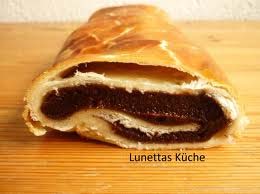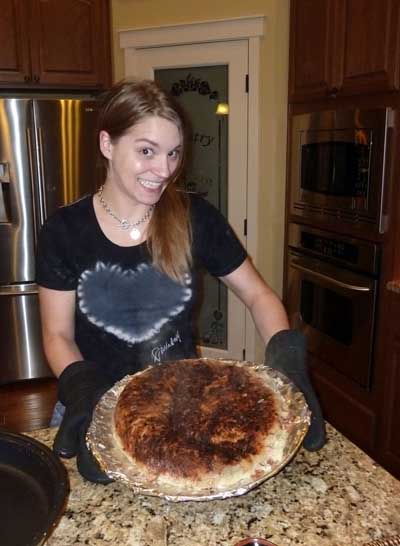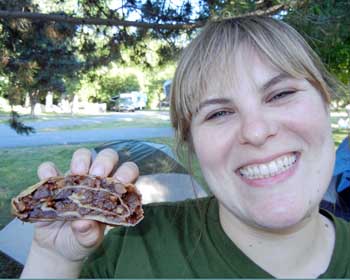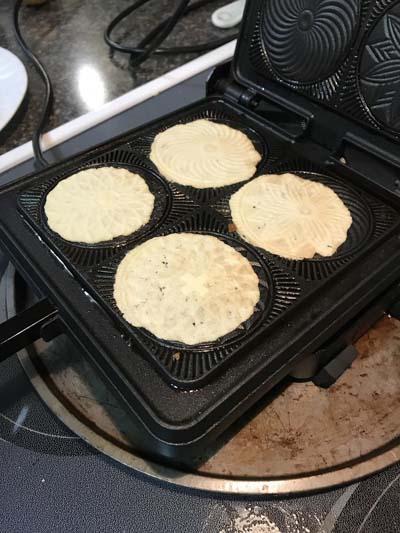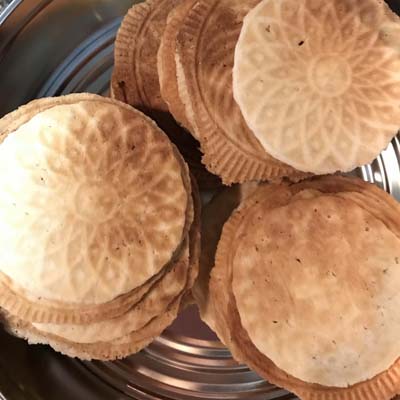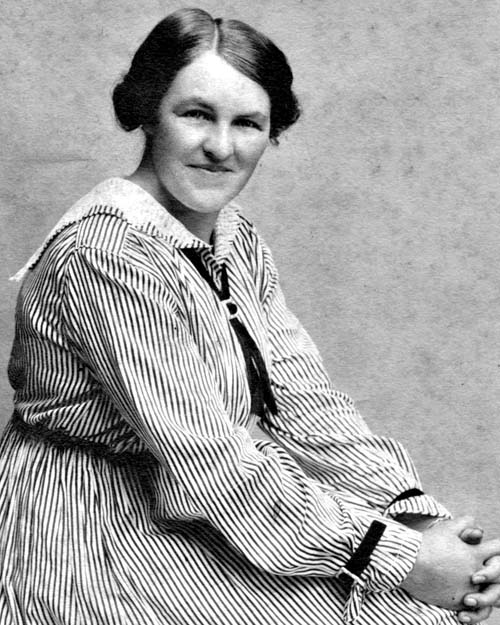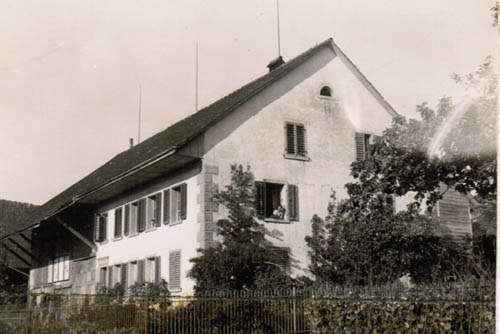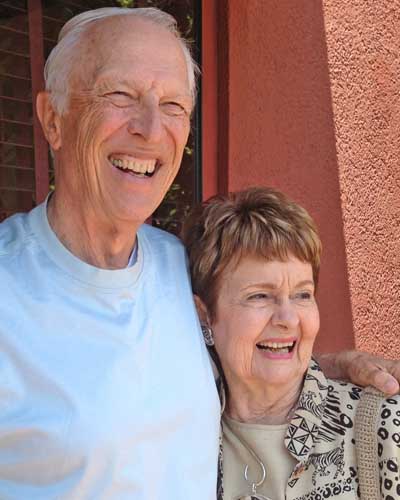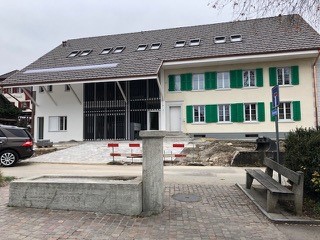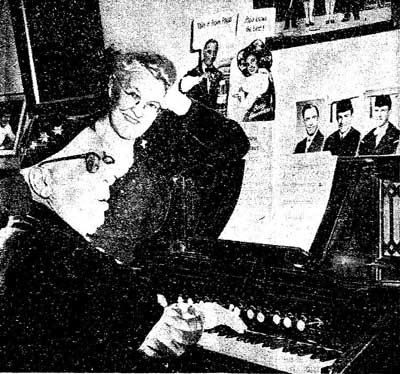 |
Mama Fraunfelder www.swissfamilyfraunfelder.com |
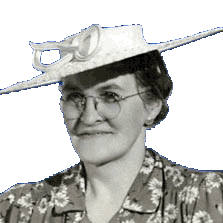 ; ; |
|
|
|
|
|
|
|
|
|
|
|
She
was the "Mama" Fraunfelder
behind the "Papa Fraunfelder"
Born Nov. 17, 1889 in Moriken, Switzerland Died Aug. 7, 1990 in Keizer, Oregon
The
public Swiss Family Fraunfelder could not have
functioned without the private family. And the private
family flourished because of Frieda Fraunfelder, the
wife of Papa and the mother of Rheiny, Betty, Ruthie,
Hansi, Helen, and Fritz.
Mama
was viewed by many as the most remarkable member of the
Swiss Family Fraunfelder. Her life spanned nearly 101
years (all of the last 67 years in the United States.)
Her legacy endures today. She had a profound impact -- not only her children
-- but
more than 21 grandchildren,16 great grandchildren who
knew her, and many friends of the family.
The 70-year marriage of Papa and Frieda started on strange circumstances in Switzerland. Son Fritz recently wrote, “My father was to marry her younger sister who died of tuberculosis. On her death bed she made my father promise to marry ...the older sister."
Frieda, whose maiden name was Fehlmann, came from a
prosperous farming family that may have also had banking
interests.
Her parents were Samuel Fehlmann of Moriken,
Switzerland, and Lisette
Seeberger, of Birr, Switzerland. Samuel Fehlmann was
described as a wise, kind and generous man who helped
his neighbors. Frieda received a
significant inheritance from her parents.
|
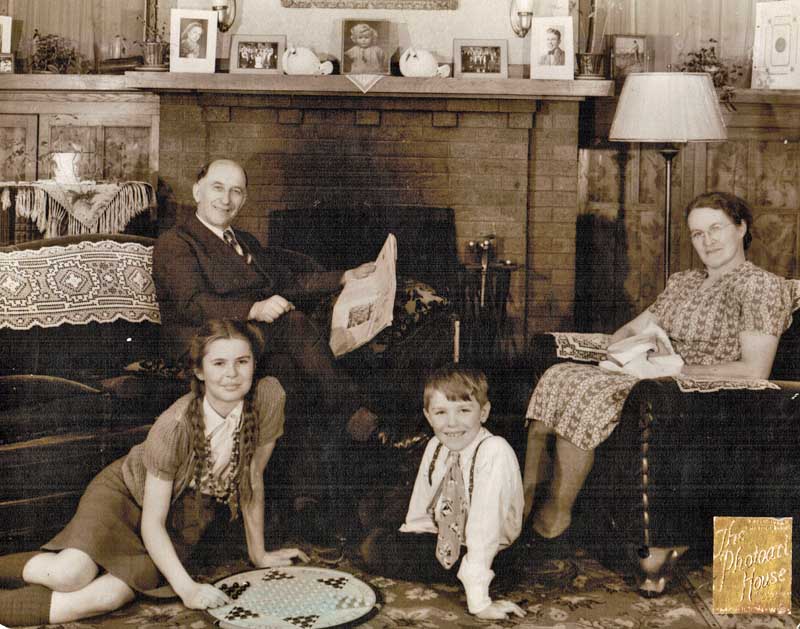
|
|
But her younger brother, who was an investor, lost it all in the stock market crash of the Great Depression, according to Fritz.
Fritz’s comments sum up the observations of many friends
and family members:
tons of vegetables from the family garden and knitted a
mile a minute ....socks, sweaters, scraps, etc. which she also gave
away." Each family in the extended Fraunfelder clan posessed
handmadeafghans, blankets, sweaters, socks and other intricately made
gifts from Mama. She knitted more than 150 afghans during her later
years.
She was an exceptional
hostess and Betty Ganders often said that it is a shame her mother never
had the opportunity to open her own tea room, pastry shop, or
konditorei, as it would have been a great success. Even impromptu visits
at the Fraunfelder home by family or friends were met with a tray of
homemade treats by "Mama" and a glass of loganberry juice, lemonade, or
tea.
Many words in the
dialect can not be accurately written. Like many Swiss Germans, she
laughed at the language's word for "kitchen cupboard." The word is
"chuchichaschtli." When pronounced correctly, the word sounds like
a cat coughing up a hairball.
Bedtime for
grandchildren was often preceded by servings of hot water and honey
(heise honig wasser.) Frieda would sing a version of a traditional Swiss
lullaby to her children and granchildren in Schyzerdutsch. The song
title is "I ghore es Gloggli." It was a song that told of the ringing of
bells and ended with "Amen" three times. Many of her great grandchildren
still sing the song as it has been passed down for generations.
Unfortunately, they do not posess the English translation.
Click HERE or the tab at the top of the page for Mama Fraunfelder's Lullaby
|
||||||||||||||||
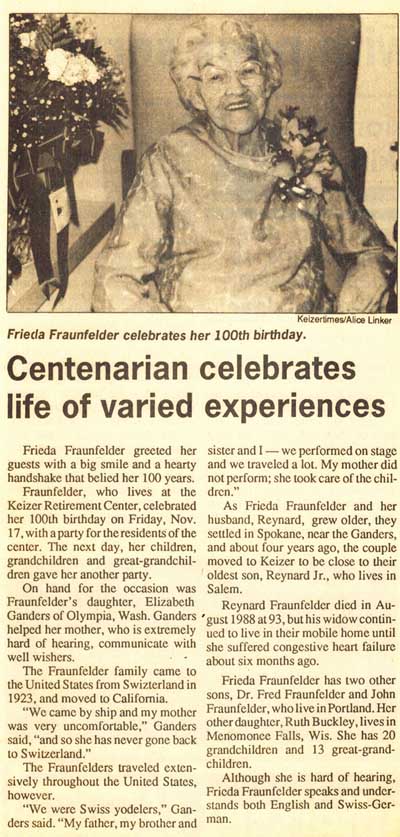 Above, an article from the Keizer, Times, Keizer, Ore., 1989. | ||||||||||||||||
|
Like Us on Facebook! Swiss Family Fraunfelder 
|
